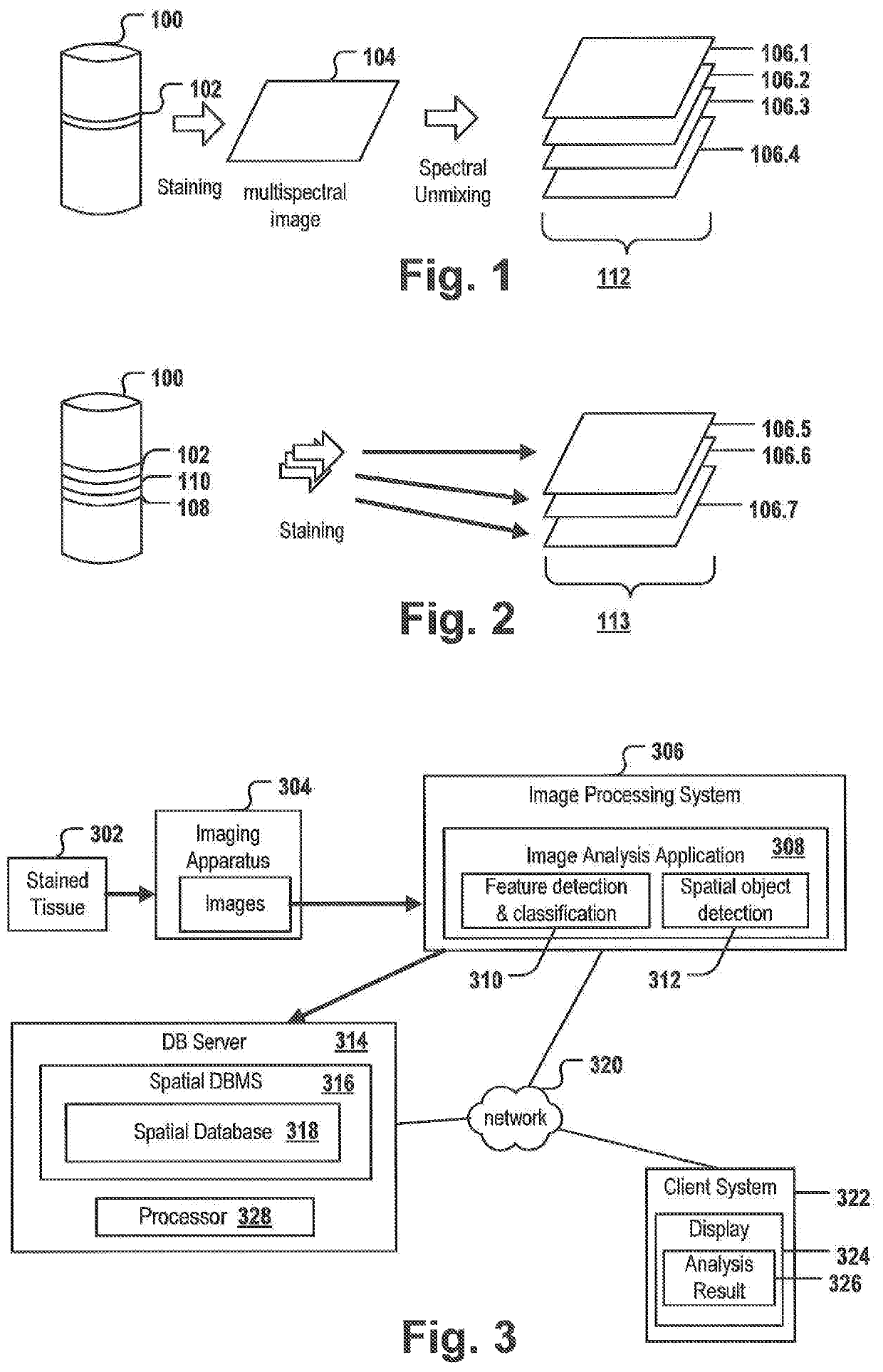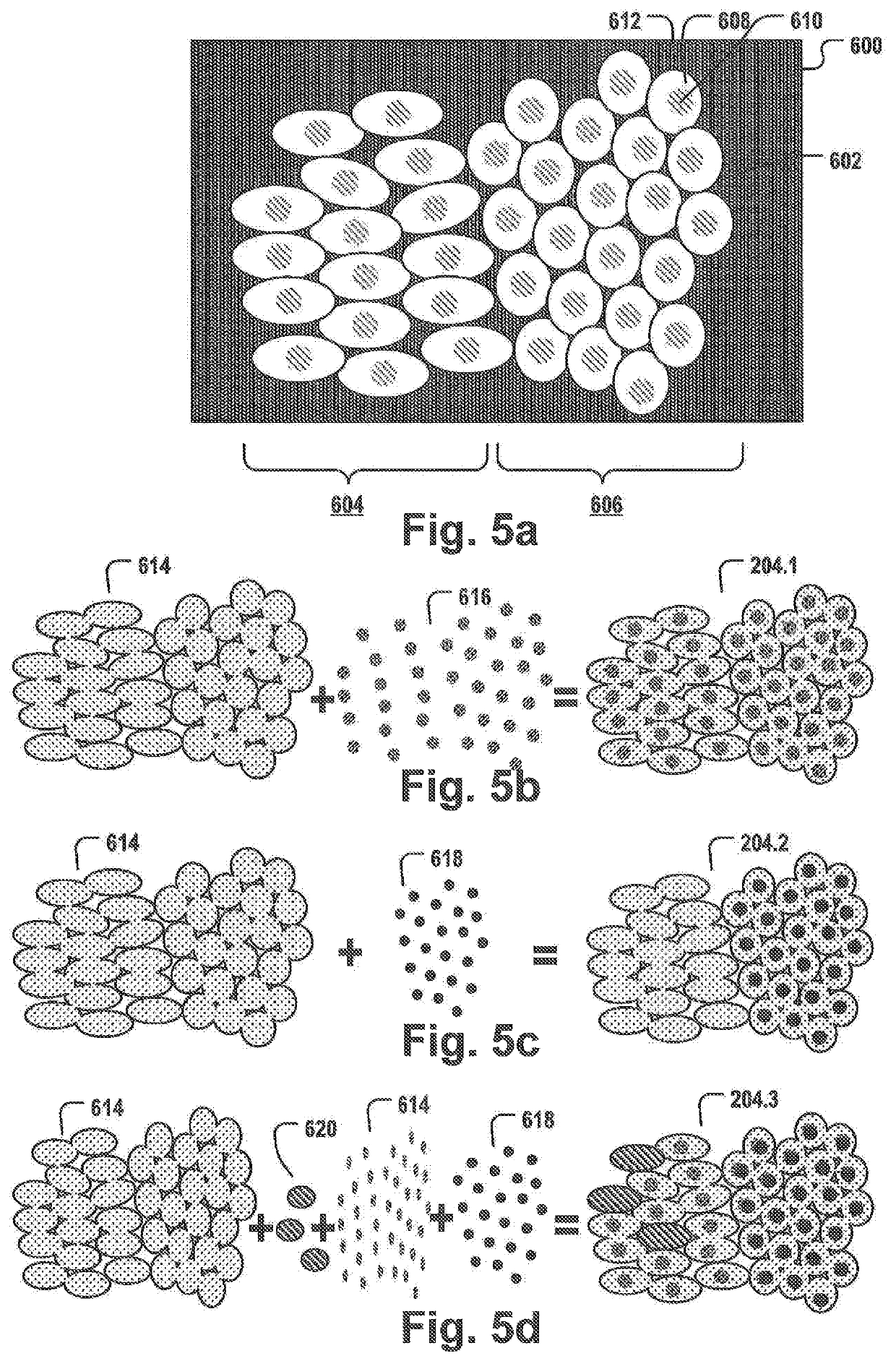Spatial index creation for IHC image analysis
a technology of image analysis and spatial index, applied in image enhancement, medical/anatomical pattern recognition, instruments, etc., can solve the problems of large computational resources, cpu and memory, large computational resources, and large number of digital images for diagnostic, educational, research purposes, and achieve the effect of quick density calculation
- Summary
- Abstract
- Description
- Claims
- Application Information
AI Technical Summary
Benefits of technology
Problems solved by technology
Method used
Image
Examples
Embodiment Construction
[0085]FIG. 1 shows the creation of a set 112 of digital images 106.1-106.4 of the same layer 102 of a tissue sample 100. For example, as part of the diagnosis of many cancer types, e.g. colorectal cancer, one or more biopsy samples are taken. The biopsy sample is sliced into one or more thin tissue layers 102. The layer 102 may be stained with one or more stains selectively staining specific biomarkers, cells and / or organelles, and a multispectral image 104 is taken from one layer 102 to capture meaningful biomedical features that may allow to classify the tumor, provide a prognosis and / or a treatment suggestion. The multispectral image may comprise spectral information of a plurality of different stains, e.g. fluorescent stains, and / or may cover a whole slide comprising the layer 102. Thus, the resulting multispectral image is often very large. By applying a spectral unmixing procedure, a plurality of digital images 106-1-106.4 is created. Each of the images in set 112 may correspo...
PUM
 Login to View More
Login to View More Abstract
Description
Claims
Application Information
 Login to View More
Login to View More - R&D
- Intellectual Property
- Life Sciences
- Materials
- Tech Scout
- Unparalleled Data Quality
- Higher Quality Content
- 60% Fewer Hallucinations
Browse by: Latest US Patents, China's latest patents, Technical Efficacy Thesaurus, Application Domain, Technology Topic, Popular Technical Reports.
© 2025 PatSnap. All rights reserved.Legal|Privacy policy|Modern Slavery Act Transparency Statement|Sitemap|About US| Contact US: help@patsnap.com



